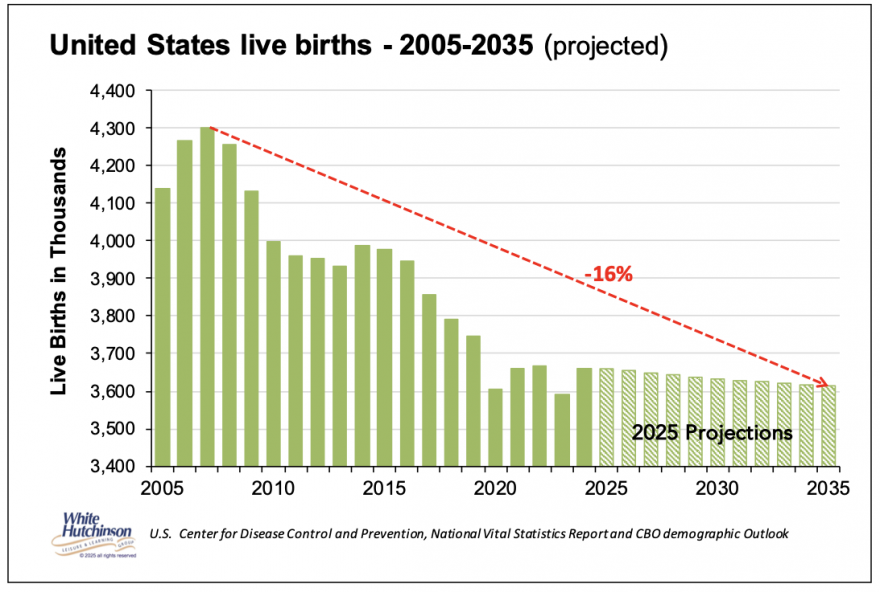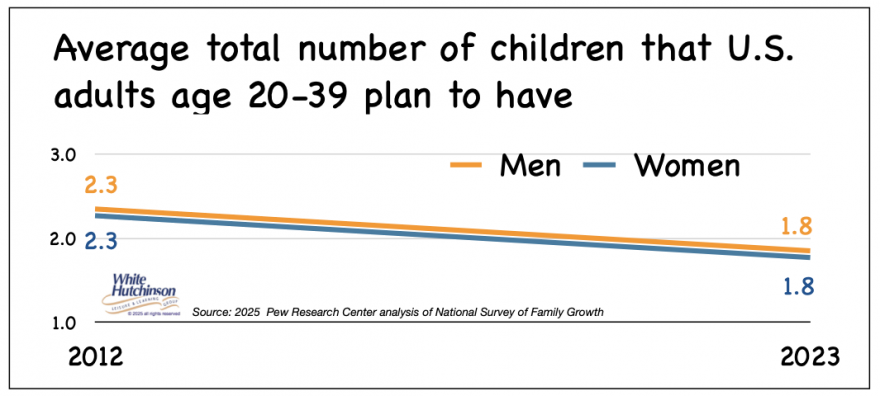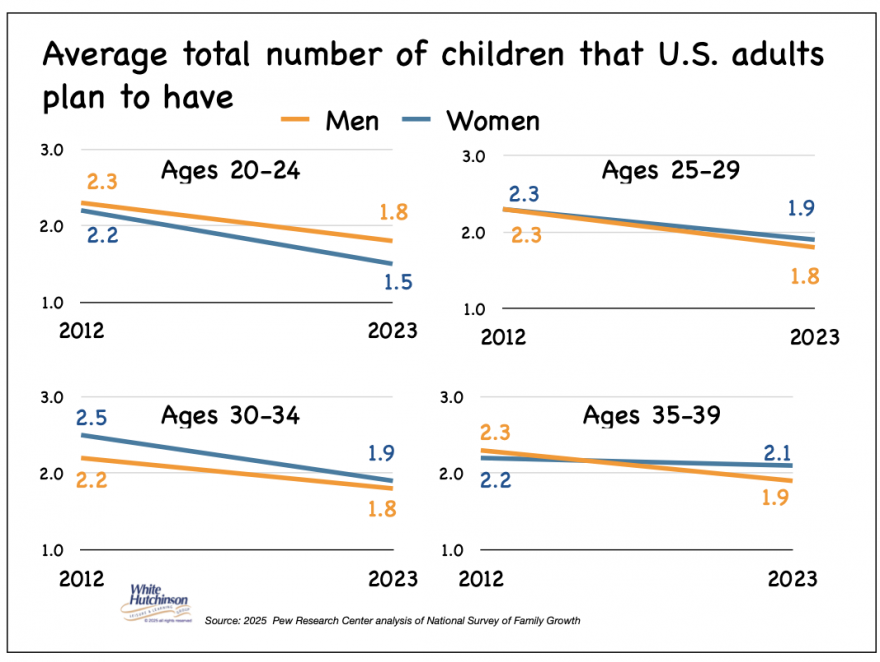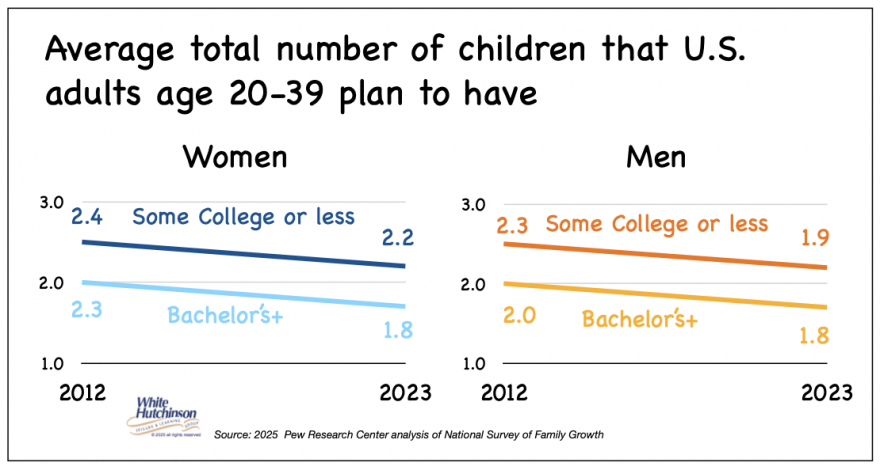
Vol. III, No. 7, July 2025
Births see a slight uptick
The CDC reports that there were 3,622,673 births in 2024. The number of births increased by just 1% in 2024, representing a marginal improvement from the record lows of recent years. The birthrate remains near a 40-year low. The Congressional Budget Office projects that the U.S. birthrate will continue to decline for the next ten years.

There were 710,000 fewer births in 2024 than the 2007 peak year. Births were 1.43% of the total population in the 2007 peak year of births. In 2024, that declined to only 1.07% of the population.
Data from Pew Research Center indicates that the continuing decline in births may be more severe than the projections of the Congressional Budget Office. Pew found that Americans in their 20s and 30s plan to have fewer children than a decade ago. The number of births women and men aged 20 to 39 planned to have on average dropped from 2.3 in 2012 to 1.8 in 2023. The 1.8 planned number of children is below the 2.1 average number per woman that a population needs to replace itself.

Between 2012 and 2023, the total number of children that women planned to have, on average, dropped from:
- 2.3 to 1.5 for women ages 20 to 24
- 2.3 to 1.9 for women ages 25 to 29
- 2.5 to 1.9 for women ages 30 to 34
- 2.2 to 2.1 for women ages 35-39
Among men, the declines were similar across all age groups.

Women ages 20 to 39 with a four-year college degree plan to have fewer children than women without a four-year degree. In 2023, the total number of children that women aged 20 to 39 planned to have was:
- 1.8 among those with a college degree
- 2.2 among those without a college degree
There were no significant differences by education among men.

In 2023, about three-quarters of men (76%) and women (77%) had or planned to have at least one child. This was down from 91% and 92%, respectively, in 2012.
These trends, which are projected to continue, do not bode well for agritourism venues that target children or families with children. Most alarming is that Americans with four-year or greater college degrees make up the vast majority of spending on fees and admission to location-based entertainment venues that include agritourism (80%), and those households are projected to have the most significant decline in the number of births.
Subscribe to Agritourism Today



